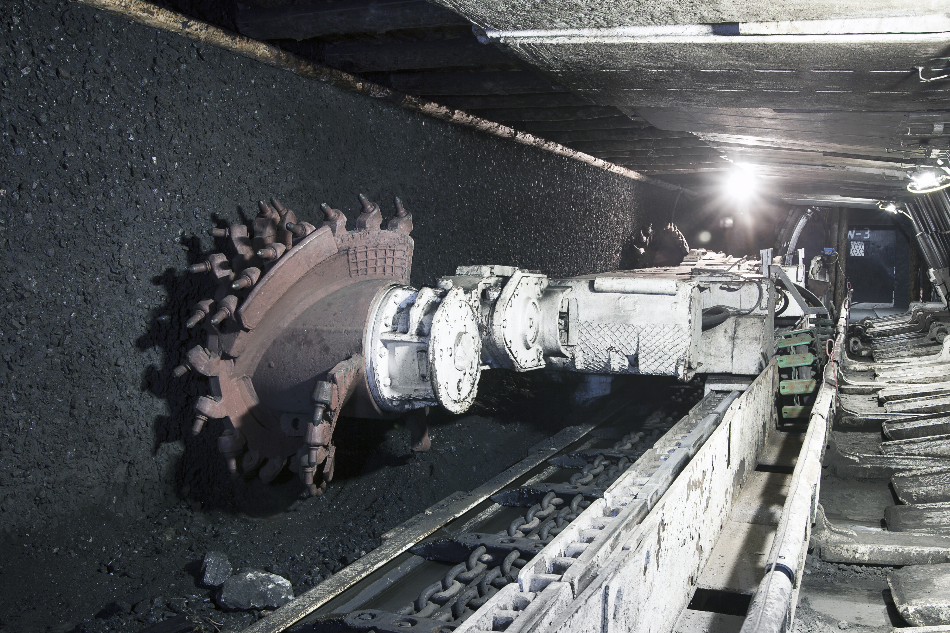
Sopotnicki / Shutterstock
The most common alloys used in mining equipment are made up of different elements; most notably steel, nickel-chromium, iron, and molybdenum. Steel has a variety of applications in the mining industry because it is inexpensive. It is also strong but lightweight, enabling large consignments to be shipped worldwide with relative ease. Most importantly, it is highly resistant to corrosion and is durable for long periods.
The World Steel Association currently lists steel at over 3,500 grades. Steel is used for drill rigs, demolition equipment, mining screens, pumps, grinding media, pipes, heat exchangers, vessels, and more. It’s versatility and ability to withstand harsh and abrasive mining environments make it a priority for mining companies looking to order new equipment.
However, steel by itself is often not enough for equipment expected to survive in extreme temperatures, unstable ground conditions, and inclement weather. Many R&D companies have been producing enhanced alloys specifically designed to protect mining equipment from breakdowns and damage caused by harsh environments.
INCONEL & INCOLOY alloys are now widely used in global mining projects. Composed of a combination of nickel, chromium mixed with molybdenum and iron, INCONEL & INCOLOY are corrosion resistant and can withstand extremely high temperatures.
There are several different grades produced, including INCONEL 617 and INCOLOY 825. INCONEL 617 is composed of a nickel-chromium blend incorporating molybdenum. The alloy has good stability under pressure, operates at high temperatures and is resistant to the oxidants that effect weaker alloys. INCOLOY 825 is a superalloy principally composed of 38-46% nickel, 22% iron, 23.5% chromium, and trace amounts of molybdenum, copper, manganese, titanium, silicon, aluminum, carbon, and sulfur. It is called a ‘superalloy’ due to its particular resistance to sulphuric & phosphoric acids making it perfect for gas and oil well pipes.
Hardfacing Alloys
Some mining companies do not always have the budget or resources to replace aging equipment at the same time. Many use hard facing alloys to act as primers on existing equipment, increasing their lifespan until finance and resources are in place to order replacements. These alloys are welded onto equipment surfaces and come in several categories.
Iron-based alloys are the favored choice due to cost and availability, but martensitic alloys are also popular. Martensitic alloys are good for metal-to-metal & abrasive wear and can withstand high impacts caused by drills and explosives.
Metal Carbide & Soft Austenitic Matrix
Alloys in this category contain large deposits of metal carbides in a soft matrix that has an excellent severe abrasion application. They also contain large amounts of chromium carbide and are similar to cast iron or white iron.
Hardness strength begins at 40 HRC but can go as high as 65 HRC.
New Alloy Potentials for Mining Equipment
A new silver-gold alloy has been used by the US military to lighten the load and enhance the power of equipment needed by soldiers operating in battlefield conditions.
Ground drones made of this new alloy blend can operate due to the way the alloy has been synthesized. The breakthrough was achieved by controlling the optical and plasmonic properties of gold and silver by changing the alloy chemical composition. This military application will be exciting for mining R&D as scientists believe this experimental and computational approach can be extended to other materials – including those used in mining equipment.
Other Advances
Back in 2016, Sandvik used the first battery trammed mining jumbo to allow miners more freedom to move drills more easily between countries. The battery was made of sodium nickel chloride, providing a reduced risk of fire and resulting in a safer system for underground mining use.
Sources
Disclaimer: The views expressed here are those of the author expressed in their private capacity and do not necessarily represent the views of AZoM.com Limited T/A AZoNetwork the owner and operator of this website. This disclaimer forms part of the Terms and conditions of use of this website.